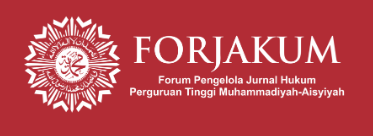TINJAUAN PERLINDUNGAN KARAKTER FIKSI MELALUI MEREK BERDASARKAN STUDY KASUS SENGKETA MEREK SUPER MARIO BROSi
DOI:
 https://doi.org/10.37859/jeq.v7i2.4274
https://doi.org/10.37859/jeq.v7i2.4274
Abstract
The case of a fictional character who became a trademarks is the case of the "Super Mario Bros" trademarks in which individual trademarks holders, Indonesian companies and the Director General of Intellectual Property were sued by a well-known game company, Nintendo. The crew of 'mario bros' characters were used as packaging designs and characters in the game, but because the game has been loved by people in countries such as Australia, Malaysia, India, China, including Indonesia in the 90s (nineties), Nintendo decided to register the character. "super mario bros" and its variants use trademark registration media. This means that the Nintendo company avoids legal turmoil caused by irresponsible parties to use fictional characters have sold tens of thousands of copies.However, even though it has been registered, there are still parties who have managed to get the rights to the brand with the "Super Mario Bros" logo. Registered in 1994 in the name of an individual or individual before being transferred to a legal entity or company.
Downloads
References
Aaron Schwabach. Fan Fiction and Copyright. New York: Taylor & Francis, 2016.
Alexander, Rendy, Program Studi, Magister Ilmu, Fakultas Hukum, and Universitas Indonesia. “PENERAPAN PRINSIP ‘ FIRST TO FILE ’ PADA KONSEP PENDAFTARAN MEREK DI INDONESIA” 10, no. 9 (2022): 2110–2121.
Assyifa, Mahadina Risa, and Siti Ummu Adillah. “Perlindungan Hukum Pt. Inter Sporst Marketing Sebagai Pemegang Hak Cipta Atas Penyiaran Piala Dunia Brazil 2014 Berdasarkan Uu No. 28 Tahun 2014 Tentang Hak Cipta.” Prosiding Konstelasi Ilmiah Mahasiswa Unissula (KIMU) Klaster Hukum (2021): 543–561.
Balkwill, R. “Managing Intellectual Property in the Book Publishing Industry.” Managing Intellectual Property, no. 1 (2008): 1–86.
Hery Firmansyah. Perlindungan Hukum Terhadap Merek. Pustaka Yustisia, 2011.
pengadilan niaga jakarta. Putusan Nomor 58/Pdt.Sus-Merek/2020/PN.Niaga.Jkt. Pst (2022).
Rizki, Muhammad, and Imron Rosadi. “Penyelesaian Perkara Persaingan Usaha Oleh Komisi Pengawas Persaingan Usaha Di Era Revolusi Industri 4.0.” Journal RechtIdee, Vol. 14, no. 1 (2019): 153.
Wijaya, Wilson, and Christine S.T. Kansil. “ANALISIS KEKUATAN UNSUR ITIKAD BAIK PADA PELAKSANAAN PENDAFTARAN MEREK DI INDONESIA (Studi Kasus Putusan Mahkamah Agung Nomor 364K/Pdt.Sus-HKI/2014) BERDASARKAN UNDANG-UNDANG NOMOR 20 TAHUN 2016.” Jurnal Hukum Adigama 1, no. 1 (2018): 937.
Wolfgang Sakulin. Trademark Protection and Freedom of Expression. Netherlands: Kluwer Law International, 2011.
“Assignments, Licensing, and Valuation of Trademarks.” International Trademark Association.
“Protection of Fictional Characters.” FindLaw Attorney Writers.
Putusan No. 709 K/Pdt.Sus/2012 (2012).












